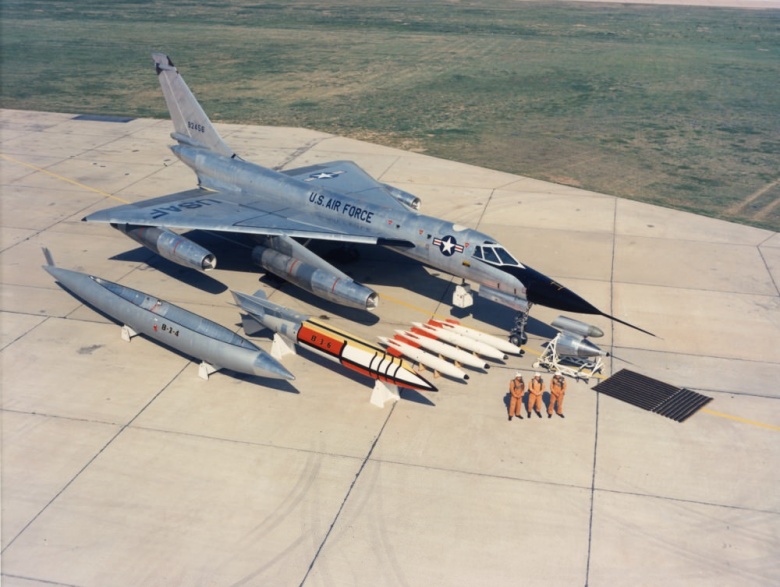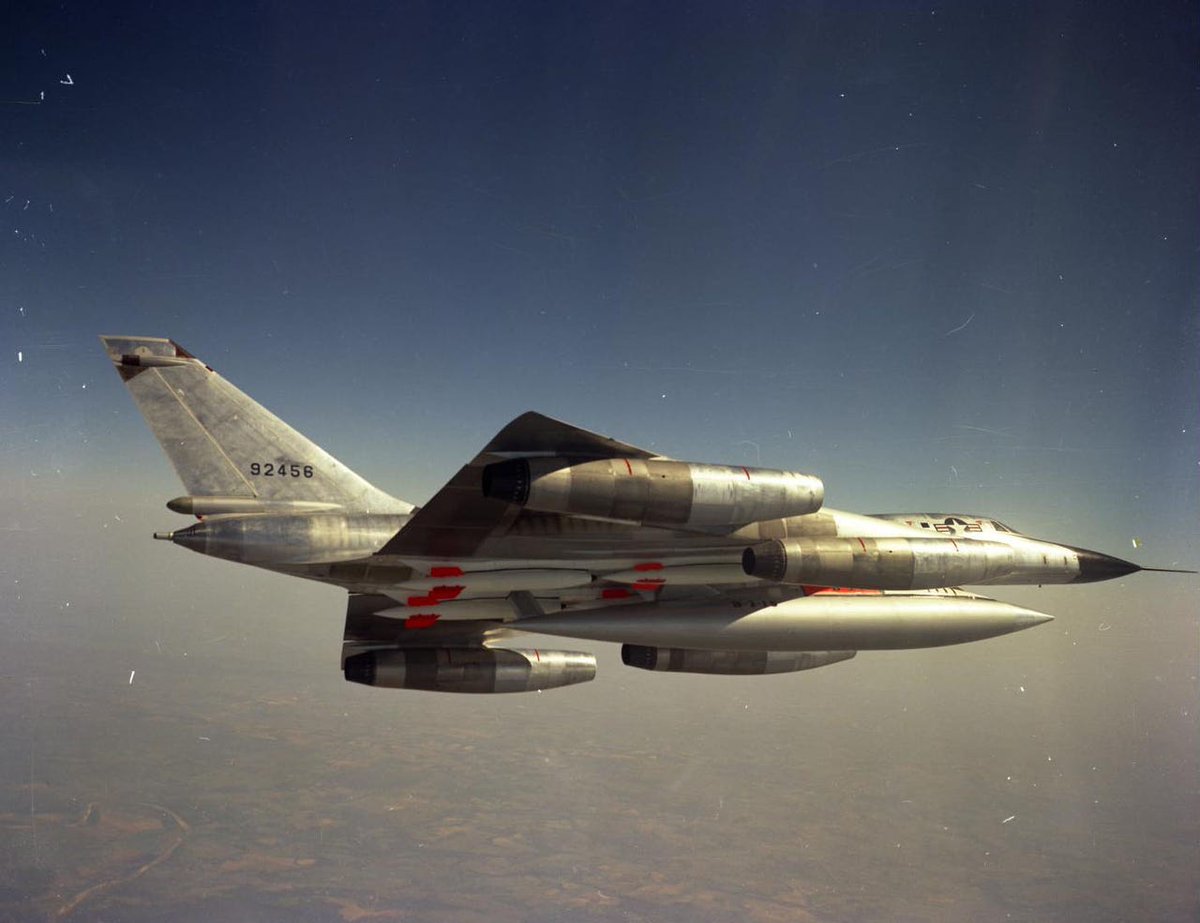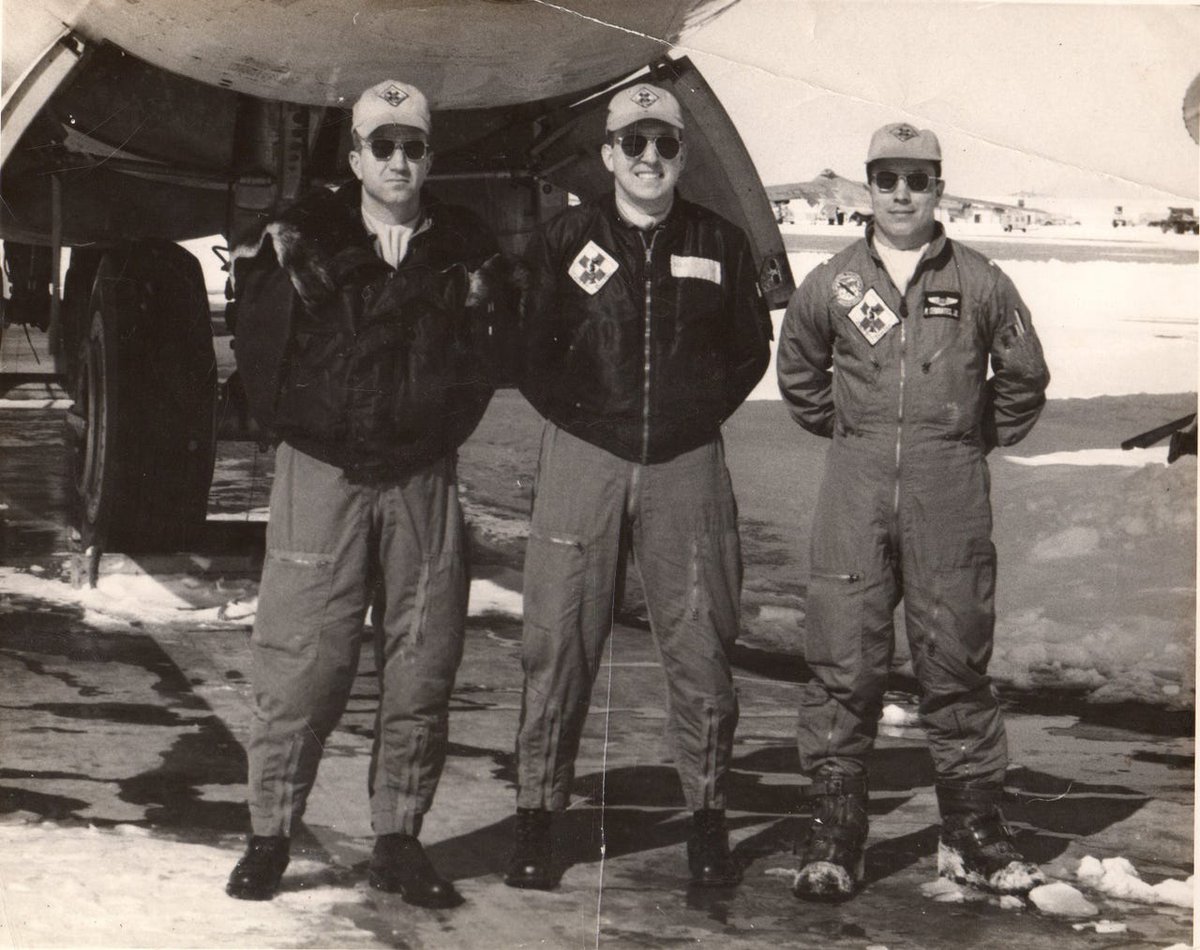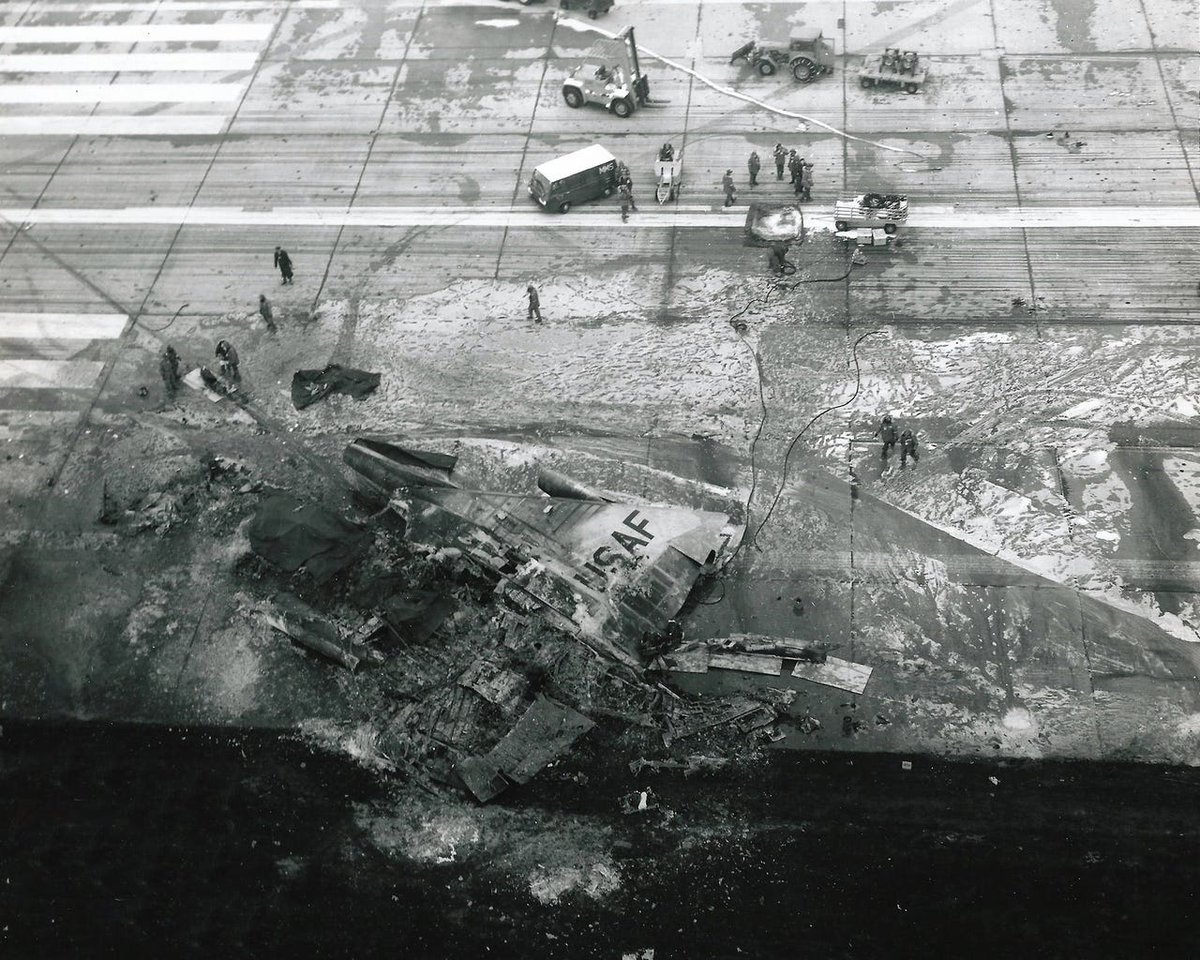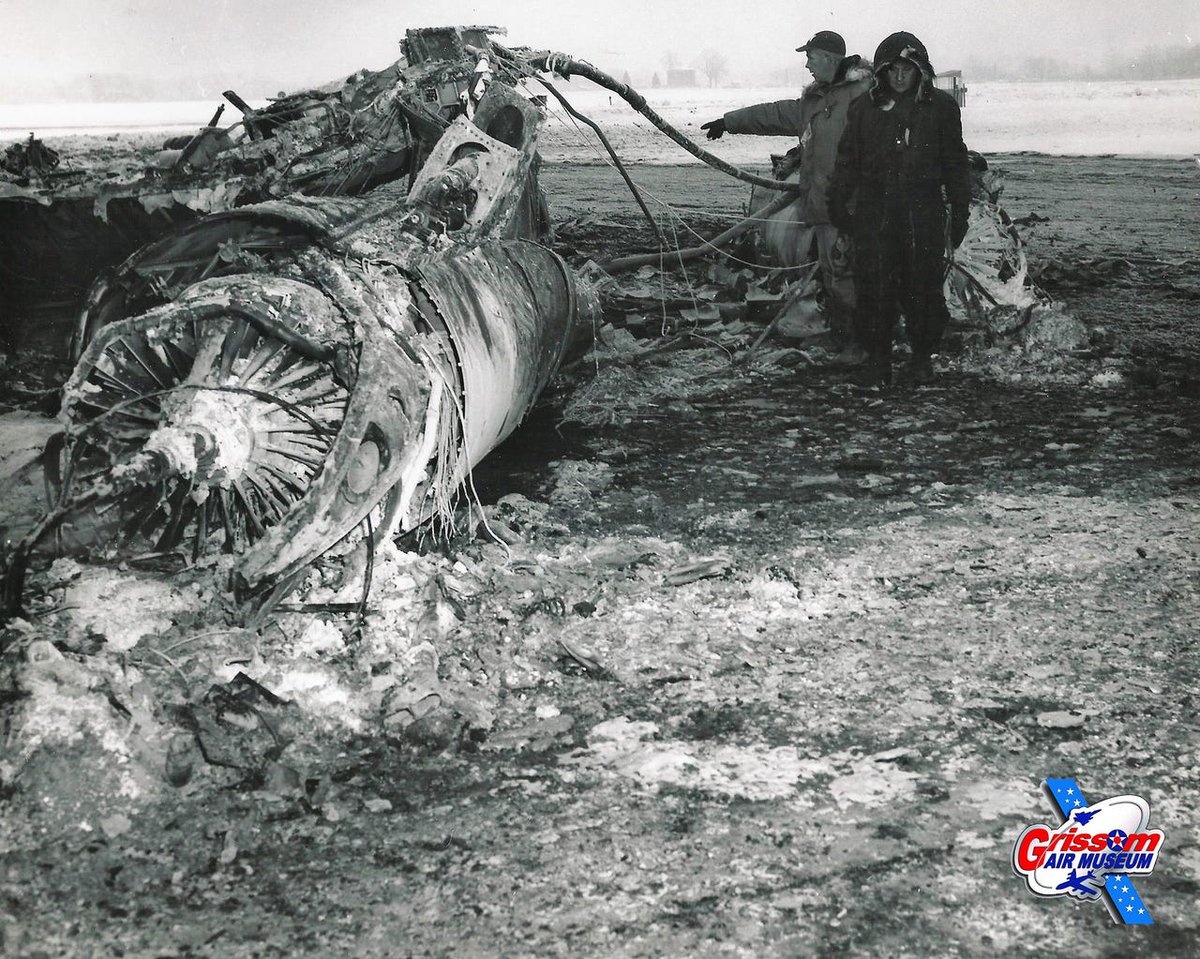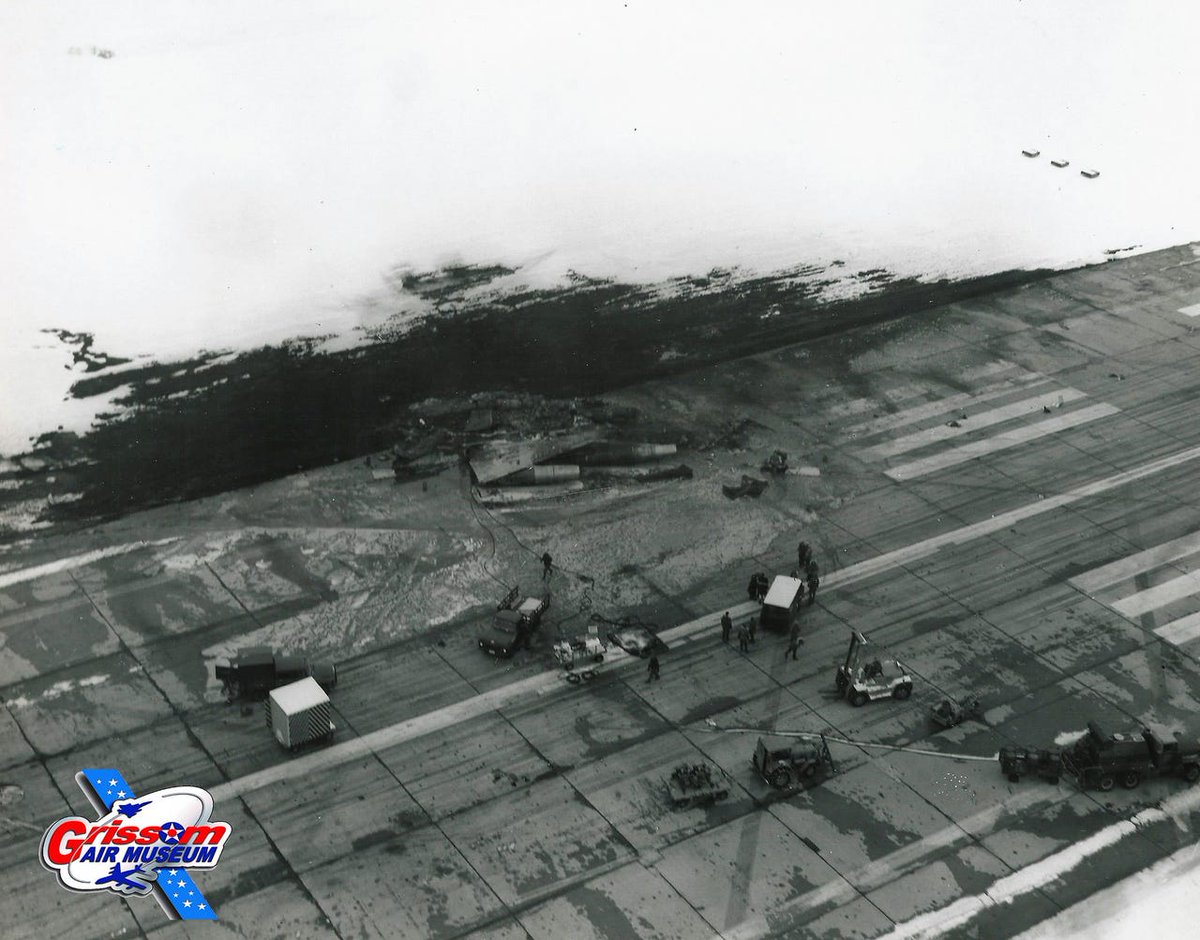OTD in 1964 at Bunker Hill AFB, Indiana, as aircraft were taxiing during an Operational Readiness Alert inspection exercise in icy weather, a B-58 carrying a 9Mt B53 bomb in a pod and four 70kt-1Mt B43 bombs skidded off the taxiway, suffered landing gear failure, and caught fire.
All three crew members abandoned the aircraft. The commander and defensive systems operated escaped with superficial burns. Navigator Manuel "Rocky" Cervantes, Jr., 29, was trapped and opted to use his escape capsule. Its parachute had no time to deploy. He landed hard and died.
When the landing gear collapsed, the B-58 crushed the pod beneath it, which carried both the B53 bomb and 14,000 gallons of fuel. The fire caused the high explosives in all five bombs to detonate. The wreckage burned for two hours. Three of the five bombs were heavily damaged.
The fire destroyed the B53's all-uranium pit. The left forward B43 suffered major damage, incl. a ruptured tritium reservoir. When recovered the next day, its secondary ignited (lithium reacts exothermically with water/water vapor), then burned out. It ignited again a day later.
During cleanup operations, unsalvageable aircraft parts were buried a few hundred yards from the site of the accident. In 2000, nine years after the base had been deactivated and the Air Force had left, the burial site was dug up and B-58 parts and radioactive soil were removed.
Even at nearly 97' long, more than 31' high, and with a wing span of almost 57', most photographs of the B-58 make it hard to appreciate just how large the world's first supersonic bomber was. Thankfully, @NuclearAnthro
went to the Pima Air & Space Museum and stood next to one.
went to the Pima Air & Space Museum and stood next to one.

 Read on Twitter
Read on Twitter